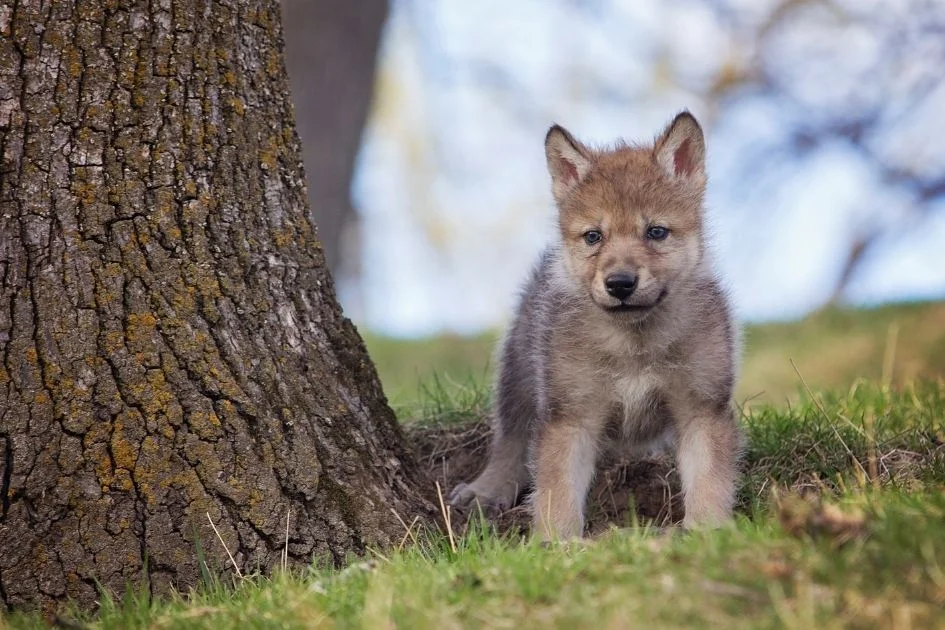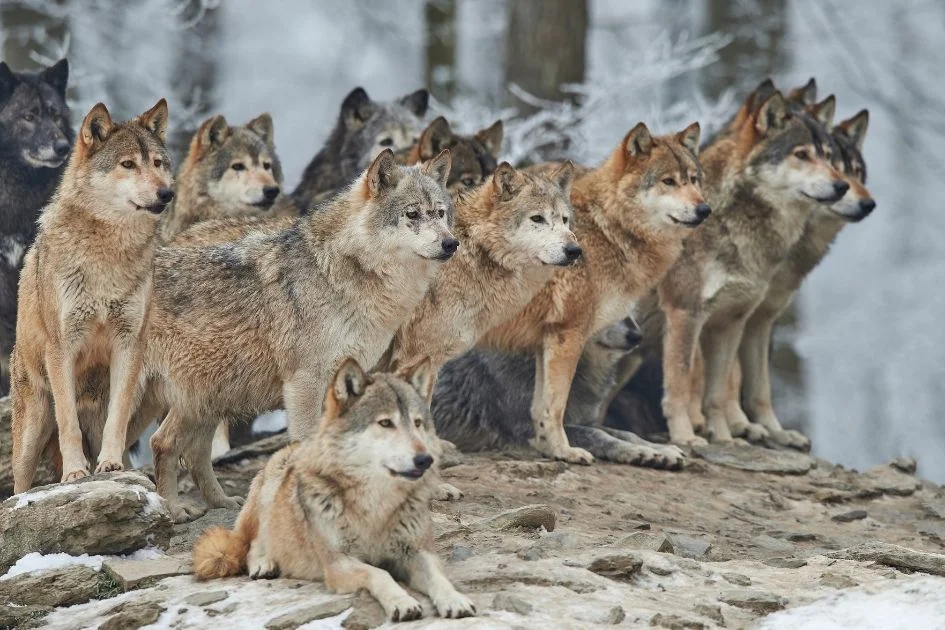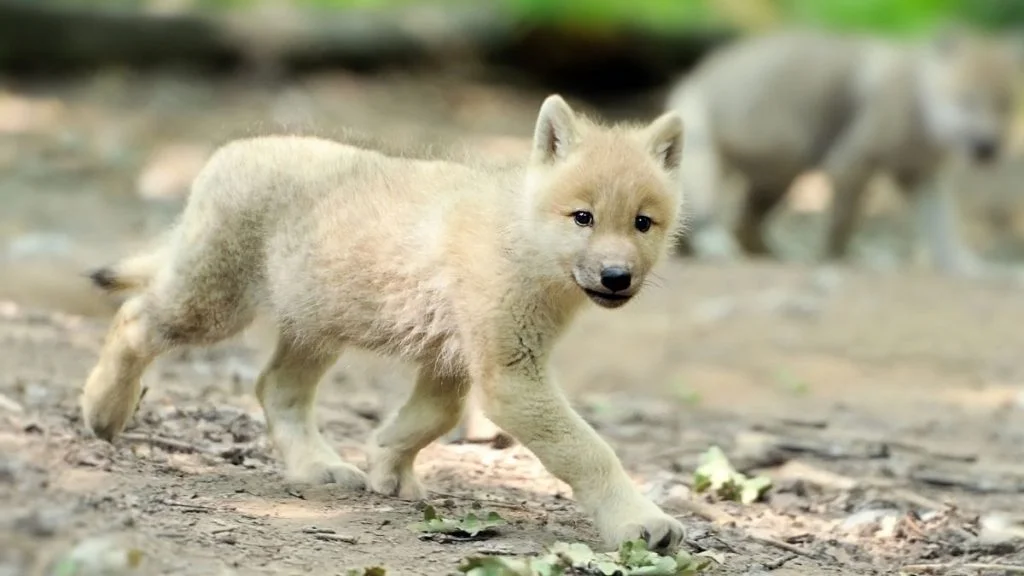Wolves are an interesting animal species; they are not only intelligent but are also highly social animals. They live closely together in a pack, form relationships, and express emotions.
A she-wolf gives birth to 4–6 babies in a litter; when she does, the whole pack members help care for the young. But what is a baby wolf called? Is a wolf a cub or pup?
There’s a popular misconception that baby wolves are called cubs, which often leads to confusion, but they’re not. A baby wolf is a pup. Similar to how dog babies are puppies, wolf babies are pups.
In the following paragraphs, you will learn everything you need about wolves and their pups.
What is a Baby Wolf Called?

Contrary to popular opinions, a baby wolf is a pup, not a cub. Like most animal babies, a baby wolf is unarguably one of the most adorable and intelligent animal babies.
They are given birth to alive by the female wolves of either of the two main wolf species: gray wolves (Canis lupus) or red wolves (Canis rufus).
Early Life of a Wolf Pup

Baby wolves are born together in litters, and the pups in a litter are called littermates. They only survive on milk from their mother, and these pups weigh only about a pound with their eyes closed.
At about two weeks, the pups begin to grow teeth, and around this time, they also start to walk. Within three weeks, they can move outside of their den.
By this time, they start outgrowing milk and now require more solid food to survive on. At this time, the young pups begin eating meat brought to them by adult wolves.
From six months old, the pups hunt with the rest of the pack members because they now look very similar to adult wolves at this stage.
As they grow older, the pups stay in the pack until they’re about two years old. With time they drift away from their family pack and go out to form theirs.
Interesting Facts About Baby Wolves
Gray and red wolf pups almost have the same characteristics; they grow and develop similarly but differ in some aspects.
- They feed on their mother’s milk before they’re weaned off and start feeding on regurgitated meat from the adult wolves.
- They’re born small, but they develop rapidly such that babies that weigh one pound at birth gain about 3.3 pounds in a week for males and about 2.6 pounds for females.
- A litter of gray wolves contains two to seven pups, while that of red wolves has two to eight pups.
- The newborns can’t open their eyes nor hear sound at birth, thus making them reliant on their mother.
- When they hunt with other pack members, they tire out the prey by chasing them around for the adults to kill.
- The pups build their communication skills and strength by playing and socializing.
Wolf Reproduction Basics
Reproduction in wolves occurs once a year, usually between January and March. A mature female carries a pregnancy for 63 days, and pups develop inside their mother throughout this period before birth.
Through most of the gestation period, the female wolf’s life is still relatively normal until the end of this period.
After giving birth, the pack members care for the mother and the pups, bring meals for the nursing mother, and even help nurture the young ones.
The Wolf Den

The pregnant wolf will reside in a den before the time of birth so she can give birth inside it. The shelter could be a hole dug out of the ground or a small cave large enough to accommodate the mother and newborns.
New dens can be made year after year for breeding, or female wolves can repeat the old ones yearly.
The function of the den is to protect pups and their mother from the weather and safeguard the young ones from animals that may want to attack.
Are Wolves Monogamous or Polygamous?
Wolves are monogamous; they have one primary mate throughout their lifetime. A male and female wolf enter a lifelong union, mate together and reproduce yearly to build their pack.
Although most female alphas are purely monogamous, that can’t be said for male alphas as they tend to stray from other female pack members.
While the females typically sexually mature at the age of 2, the males sexually mature at 2 to 3 years old.
How is a Wolf Pack Structure?

Wolves are social animals; hence they thrive when they reside in a group. These groups are called “packs,” which usually consist of 8 to 9 individual wolves but can have as many as 20 to 30 members.
Wolves packs are similar to extended families in humans. The pack life ensures that young wolves are cared for and fed, making it easy for them to protect their territory.
Furthermore, a breeding pair (a male and female wolf), also known as the alphas, leads the wolf pack. These pairs lead the other pack members to hunt and are the only pair in the pack that gives birth to pups.
Life of Wolves
Although wolves are complex animals, they’re intelligent animals and family-oriented. They live with relatives because a pack consists of the male and female alpha with their offspring.
They rarely accommodate an outsider wolf, and even though they’re all family members, there’s still a social order within the pack, and each member knows their position and functions.
These canines lead fascinating lives as they communicate and express emotions with one another by growling, howling, and barking.
How Long Do Wolves Live

The life expectancy of wolves varies. On average, wolves can live up to 14 years in the wild and up to 16 years in captivity.
To date, the world’s oldest wolf recorded was a captive and well-socialized wolf named Maddie, who lived for 19 years.
Factors that Affect a Wolf’s Lifespan
Only about 30 percent of wolves survive from birth to 1 year of age. This high mortality rate of wolves is due to certain risk factors that put their lives in danger.
And some of these factors include:
Poor Living Conditions
When pups are raised and live in dirty and unhealthy habitats and dens, they have a high chance of contracting diseases from their environment, thus shortening their lifespan.
Starvation and Malnutrition
Even in the wolf family, starvation and malnutrition can lead to death. Pups will starve when their mother abandons them.
Also, they can quickly become malnourished when they are too many, given the quantity of milk produced by the mother. Hence, starvation can affect their health and development, leading to death.
Attack from Predators
Predators prey on wolf pups when they see their protective parents are not around them.
Also, lone wolves that venture out on their own to start a pack can be attacked by predators since they are without their protective parents and pack members.
Humans Activities
Various human activities lead to the death of wolves. These activities include encroachment on their habitat and trapping during hunting, which eventually catch and kill some wolves.
Wrap Up
Just like dogs, baby wolves are called pups and not cubs. When they are born, they lack eyesight and depend on their mother for milk.
However, they’re weaned off within a month to start feeding on meat.
They grow swiftly immediately after birth and attain maturity by two years when they venture out to start their pack.
Featured Image Credit: Byrdyak / Getty Images






